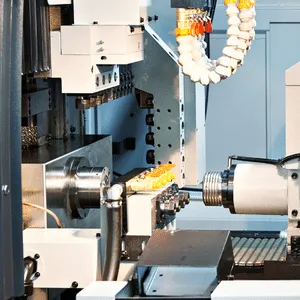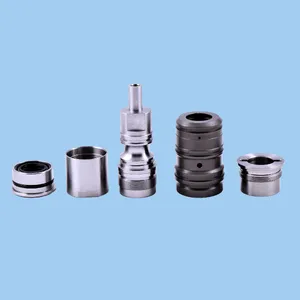What is Free-Machining Steel?
Free-Cutting Steel is a nickname for carbon steel with additional alloying elements for the sole purpose of improving their machinability and chip control. They are also nicknamed Free-Cut or Free-Cutting materials.
Free-Machining steels are divided into 3 sub-groups
- 11xx series: the amount of Sulfur (S) is increased from 0.05% in plain carbon steels to 0.1%. It adds about 20% to the machinability when compared with the equivalent materials in the 10xx series. On the other hand, the tensile strength decreases by about 10%, and the material is more brittle.
- 12xx series: Sulfur (S) content is further increased to 0.25%, and Phosphorus (P) content is increased from 0.04% in the 10xx series to 0.5%. As a result, the machinability increases by another 40% at the price of further decline in mechanical properties.
- SAE 12L14 is a freecutting steel where the Phosphorus is replaced by 0.25% of Lead (Pb), which boosts the machinability by another 35%. This improvement happens because the Lead melts locally at the point of cut, thus reducing friction and providing natural lubrication. However, many material manufacturers and machine shops try to avoid lead supplements due to environmental damage and health risks.
Machinability rate comparison between plain carbon steel and freecut steels with the same carbon content
| Material | Machinability (%) | P (%) | S (%) | Pb (%) |
|---|---|---|---|---|
| 1015 | 72% | 0.04 | 0.05 | - |
| 1117 | 91% | 0.03 | 0.1 | - |
| 1215 | 136% | 0.06 | 0.3 | - |
| 12L14 | 170% | - | 0.3 | 0.25 |
Free-Machining Steel in the machining industry


Free machining steel is supplied in round bars with relatively small diameters between 0.005″ to 1.5″ (1.5 – 40 mm) and is mainly used on Swiss-Type machines for mass production of small parts. There are two main reasons why this material is attractive for this type of production.
- Turning on Swiss-Type lath is typically done at very low feedrates. At this low feed, it is near-impossible to break chips even with the most aggressive chip former. Therefore when machining standard steel alloys, long and tangled chips are formed. Free-Cut steels (Such as 12L14) are also called “Short chipping materials”. Due to their brittleness, the chips break by themselves into small bits even without a chip-former. This chip behavior is helpful to achieve a higher automation level.
- When machining tiny parts, the raw material cost becomes a smaller factor in the costing breakdown, and the cycle time becomes a crucial factor. Therefore, high machinability rates have a significant effect on the part cost.
The alloying element that enables the free-machining properties damages the quality of the alloy:
- Low ductility.
- Very brittle.
- Low strength.
- Low hardenability.
Therefore they are used only for parts that don’t require strength and wear resistance. But for such parts, they enable to reach very high production efficiency.
Other Free-Machining alloys
- Free Machining Stainless Steel is created by adding sulfur, selenium, lead, and copper- For example, 303, 416, 420F, and 430F. However, these alloys have lower corrosion resistance.
- Free Machining Copper is created by adding beryllium – For example, BeCu UNS C17200
- Free Machining Brass is created by adding lead – For example C36000 (CuZn36Pb3) and C38500 (CuZn39Pb3).